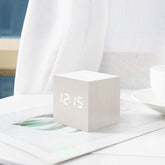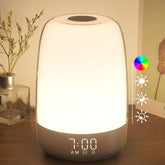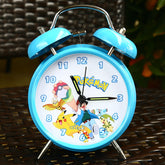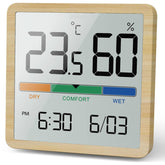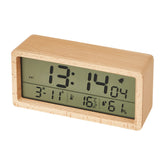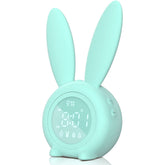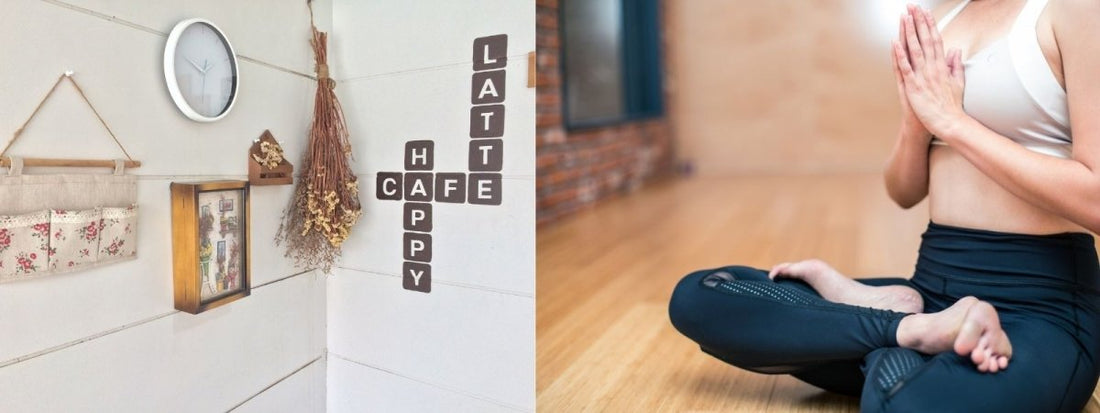Did you know that interior decoration has an impact on your health?
Well it is indeed the case, however the combination of wellness and decoration remains complex. Here are a few details that will help you see more clearly and that concern design, colors or materials and their influence.
What makes us feel at home in a space?
At first glance, a basic answer may come to mind. We can say that we have chosen the place. Or that the place we rent or buy belongs to us and that it is therefore normal that we feel at home there. But this down-to-earth answer is not enough. Because even if you are a tenant or an owner, it is sometimes difficult to feel at home. So why is that?
Let's take into account the fact that if we acquire a place to have a shelter, we don't choose it by chance. We also want it to be beautiful, comfortable and allow us to keep a link with our surroundings and the outside world.
Our reactions when designing a house or decorating it are sometimes conscious, but not always. We may have strong opinions about our tastes, preferences that we will be able to argue and explain. But some of our choices are internally guided by our instinct for security and discovery.
Theorizing the link between aesthetics and behavior
The question of the link between aesthetics and its influence on our behavior intrigues professionals.
Neuroaesthetics: experience of the giant Google
In 2019, Google participated for the second time in the annual Milan Furniture Fair, an event that attracts designers and manufacturers from all over the world. This intervention shows Google's interest in design. For the occasion, the web giant has set up an unprecedented experiment in neuroaesthetics in collaboration with the Arts & Mind Lab at Johns Hopkins University. Neuroaesthetics is a science that studies the effect of beauty on our brain.
In partnership with the architect Suchi Reddy, three different rooms were designed and furnished with furniture from the Scandinavian company Muuto. Each room had its specificities with different furniture, colors, sounds and lighting.
Visitors were invited to equip themselves with sensors to measure their biometric data. During their passage through each room, their heart rate, body temperature, skin conductivity and movements were recorded.
Example of a Google Design & Reddymade architecture room
The objective of this study was to explore the impact of what might be called "sensory inputs. That is, the impact on our state of mind of what we see, hear, feel and touch.
Ivy Ross, Google's Vice President of Product Design, led the project. He said that approximately half of the participants were surprised by the room they felt most comfortable in because it was not the one that most visually appealed to them. "We have over-optimized our environments for our cognitive mind in recent years, and we need to ignite our senses and increase awareness of what makes us feel good rather than what we think".
A simple conclusion to this study could be that what we perceive as good for us is not necessarily what makes us feel good and at home.
We tend to let our intellect speak too much and listen less to how we feel. Through this cognitive approach, we feel that we are in control of our environment and thus in control of our life and our home.
Attachment to Place: Book by Yi-Fu Tuan
In his book "Space and Place: The Perspective of Experience" published in 1977, author Yi-Fu Tuan, a geographer by profession, studies how we feel and consider spaces and how our attachment to certain places such as the house and to certain objects is formed: an old clock, an attic, an old stool, a fireplace...
Hospital and Health Centre: Maggie's example
In the search for well-being through the appropriation of spaces, we can also mention Maggie's centers founded by landscape designers Maggie Keswick-Jencks and Charles Jencks in association with hospitals in the fight against cancer. The buildings of these new types of hospitals and their interiors are designed to make patients feel good and almost at home.
Laura Lee, Executive Director of Maggies, explains that they started from the realization that hospital stays can exacerbate patients' feelings of fatigue and depression.
Example of Maggie's hospital architectures

The 18th Maggie’s Centre is a Tranquil Prefab ‘Treehouse’ for Cancer Patients.
And they have tried to design spaces that allow people to find themselves and regain confidence and feel better about coping with the disease. This principle is proving to be transposable to our homes.
These centers integrate:
- Soft forms,
- Relaxation areas,
- A place tastefully decorated with wooden furniture, works of artists,
- Openings designed to let in a maximum of light, including zenithal light.
- An organization of fluid spaces that combine small intimate places and large convivial rooms to open up to the outside world.
Thus the ideas for the construction of these centers are not only based on appearance, they appear as a link between a need to find ourselves, to reconnect with our feelings and to open up to the world around us.
Lily Bernheimer, author of the book "The shaping of us" also puts forward this idea in the context of the individual house: "The space you create must support the people and the purpose, the culture, even the climate of this space".
Everyone needs spaces where they can do the things that are important to them, whether it is an open space where children can also play or a place to relax and rest or read a book.
Reconnecting with the environment: book by Lily Bernheimer
One can indeed cite psychologist Lily Bernheimer who runs a design consulting firm and has written a book in 2017 entitled The Shaping of Us: How Everyday Spaces Structure Our Lives, Behaviour, and Well-Being.
Book "The shaping of us" by Lily Bernheimer
Drawing on her knowledge of environmental psychology, design and architecture, Lily Bernheimer in her book "The Shaping of Us" shows how the built and natural worlds subtly influence our behavior, health and personality.
Thus she questions and challenges us:
Why do we need to decorate our door frames with mouldings, what do certain pieces say about our personality?
The book tries to show that for a built environment to best promote our well-being or make us vibrate, it must echo our natural habitats, so the real secret to well-being would be to reconnect humans with the power to shape their environment by integrating it into their constructions.
Invention of Biophilia: Biologist E.O Wilson

The term biophilia was coined in the 1980s by biologist E.O. Wilson to describe the way humans seek to connect with nature. For studies show that elements of the natural world or even reminders of it have a positive impact on mental and even physical health. This concept is well known to interior designers who incorporate biophile design principles into their proposals, which translates into integration:
- Nhe notions of natural lighting
- Air circulation, the addition of organic materials and plants.
There are aspects of biophily that may seem obvious to us, such as the benefits of indoor plants or natural daylight.
Other less obvious aspects of biophily can also help us feel closer to nature. For example, the use of organic materials such as floors and furniture or decorative objects made of wood, rather than plastic or laminate. Wood is a material that helps to create the feeling of being anchored in one's environment.
The movement and constant evolution of nature can also be recreated in a home and help us feel good.
To do this, interior lighting must imitate the diffusion patterns of daylight, which moves with the movement of the sun in the sky throughout the day. The sun's path has a significant impact on our circadian rhythms* and the way we feel.
As such, some people use clever lighting combinations, including pendant lights, decorative wall lights, dimmers, table and work lamps and candles to change the lighting to suit the mood and time of day.
Darker areas will be more suitable for a restful and calming atmosphere while bright light will stimulate us.
If, as we have seen, light helps us to feel alive, active or soothed, colors also have a role to play.
Treatise on colors: Wolfgang von Goethe
Colors play an important role in our perception of the world, both physiologically and culturally. The German poet, artist and politician Johann Wolfgang von Goethe (1749 - 1832) was the first to explore the theorization of color.
In 1810, he published "The Treatise on Colors", which deals with the nature, function and impact of colors on our psychologist. Very controversial, this work is nevertheless perceived very positively by many philosophers and physicists imminent.
In his treatise Goethe refutes one of Newton's major ideas about the color spectrum, he suggests that darkness is an active ingredient rather than the simple passive absence of light. Color being itself a degree of darkness.
Goethe also created a color wheel that attributed different concepts to the colors of the spectrum:
Red ↔ Beautiful
Orange ↔ Noble
Yellow ↔ Good
Green ↔ Useful
Blue ↔ Common
Violet ↔ Unnecessary
There are many beliefs today that are not always corroborated by real studies. Generally speaking, it is said that long wavelength colors such as reds, oranges and yellows are stimulating, while short wavelength colors such as greens, blues and violets are soothing.
Decorators often use colors to influence the mood they wish to achieve in a room. For example, red is used in small strokes to add pep or stimulation. But always in small doses, otherwise it can be too aggressive. The color blue would tend to facilitate concentration and would therefore be ideal in an office or a room where one carries out cognitive tasks. Thus the choice of colors in the rooms of the house has an impact on our mood.
So even if there is no ready-made truth and that the impact of an interior on well-being remains subjective, it is interesting to consider the fundamental principles of decoration and its ability to influence our mood. And let's give more importance to what we feel than to what we feel like.
* Circadian Rhythm: A group of cyclical biological processes lasting about 24 hours.
Other articles on the theme of decoration:
5 ideas of wall clocks to decorate your room
Decorate the house with wall clocks
Decorate your child's room to facilitate creativity



